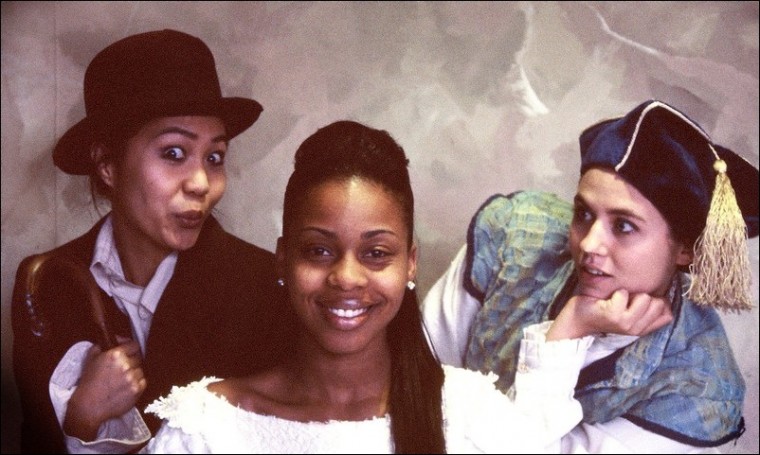Live music and strong performances makes “Twelfth Night” what you will
Image: Live music and strong performances makes “Twelfth Night” what you will:Photo courtesy of CSUS Theatre and Dance Department:
April 28, 2004
With live music, strong performances and innovative costumes”Twelfth Night, or What You Will”, is a delightfulevening presented by the CSUS Department of Theatre and Dance.Director Dr. Jaunita Rice has kept the lighthearted andcircus-inspired themes in the Shakespearian play while allowing theactors to delivers a depth that has been lacking in productions.The set design and costumes reflect the whimsical storytelling,with the chorus brandishing painted umbrellas and the costumes afantastic mix of classical and modern.
Three characters stand out, both for the power of the characteritself as well as those who portray them. The lead, Viola ofMessanine is beautifully played by Marina Majkovica, givingemotional realism to the tragic part. However, with her prettyface, we are not often convinced of her masculine gender when shetakes on the name “Cesario” and her drowned brother’spersonage. Past her fetching looks, her acting style makes you wantto watch.
Jester Feste, the wise fool that entertains both the Duke ofOrsino and the Countess Olivia’s courts delights with sharpturns of tongue mixed with sweet songs. Kate Castor who was cast asthe court entertainer, dissolves her gender identity and by far hasthe most presence within the production.
Justin R. Lytle’s Sac State stage debut as Malvolio, thesteward to Countess Olivia is unforgettable. With dramaticallyenhanced eyebrows and reddened nose, Lytle never strays out ofcharacter and makes his over-the-top character believable.
The two royal characters are a little aloof, and DanielleThrower’s personification of Countess Olivia comes across asvain and cold. J.J. Charlesworth is convincing as the Duke ofOrsino, however we wonder why Viola falls so heavily in love withhim.
Set in a round theatre, the production makes good use of thespace of the Playwrights’ Theatre and ties in to traditionwith the very effective use of live musicians. Greeting theaudience when they first enter, and continuing as entertainers ofthe Duke, the musicians help to close the gap between theShakespearian world and the audience.
The play bogs down in heavy language and twisted plots, butthankfully the cast manages of keep it light and entertaining,effectively translating the language with posture and movement.
The duo of court partiers is a good example of this. Sir TobyBelch, jolly and ridiculous is outstandingly played by Katherine M.Old, and his counterpart, Sir Andrew Aguecheek, a perfectlycostumed but sometimes over-acting Natalie Lawson, stumble throughthe play inciting laughter just by their comedic gestures. Lawsonleans forward precariously, giving us the perception that SirAguecheek is about to fall into a vat of imbecility. Old transformsinto drunkard Sir Belch, and soon we forget that a woman is in thepart of a man.
Gender turns into an interesting sub-theme of What You Will, fora majority of the characters are women playing men, and in the caseof the lead a woman playing a woman who pretends to be a man. Dr.Rice makes comments to this in the production notes, noting thatany Elizabethian play has at least five male characters to everyone female. The production team decided to cast those students whowere the best qualified for the part, adding to the convolutedcomedy, and making the audience ask what actually constitutesgender.

























































































































